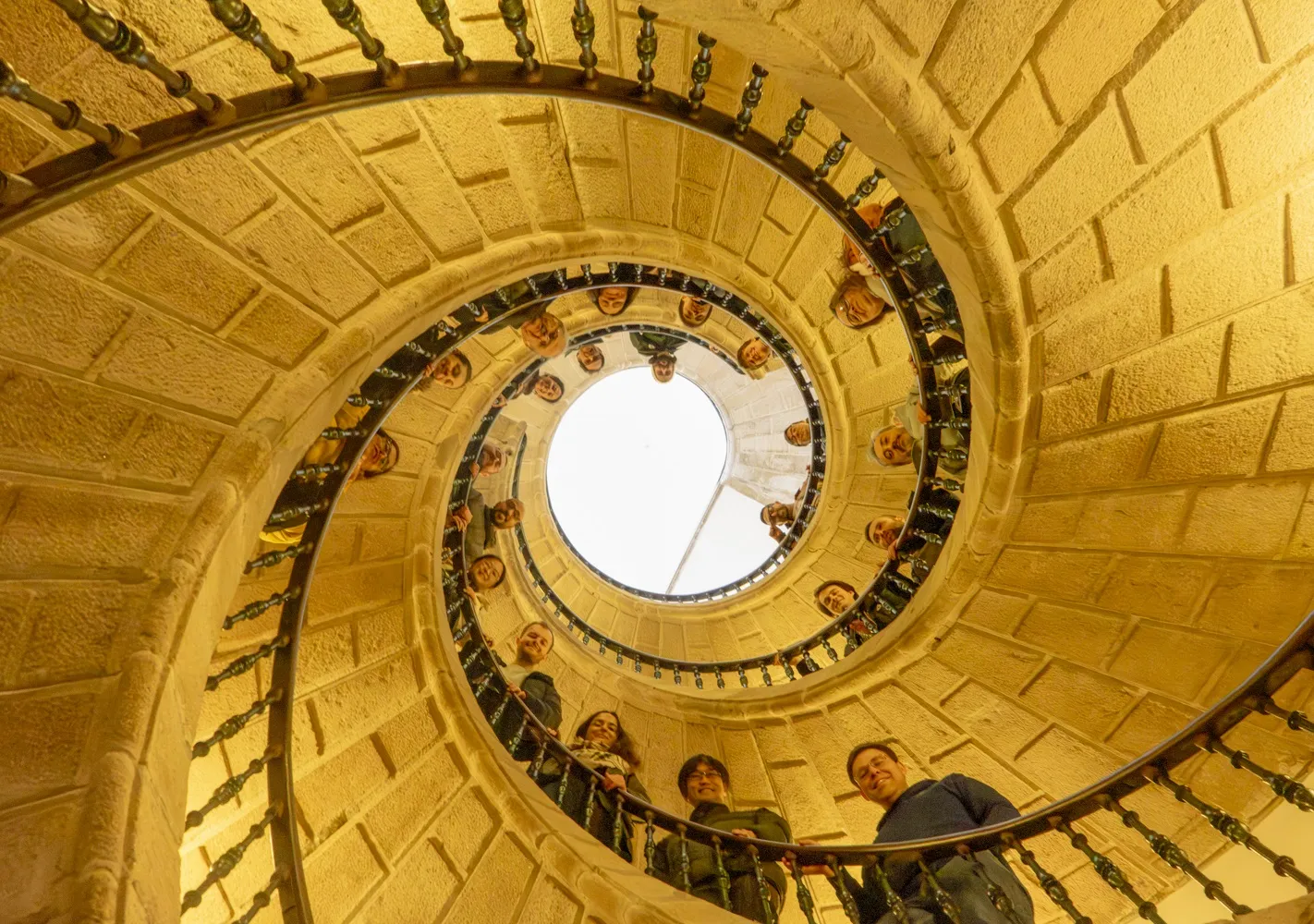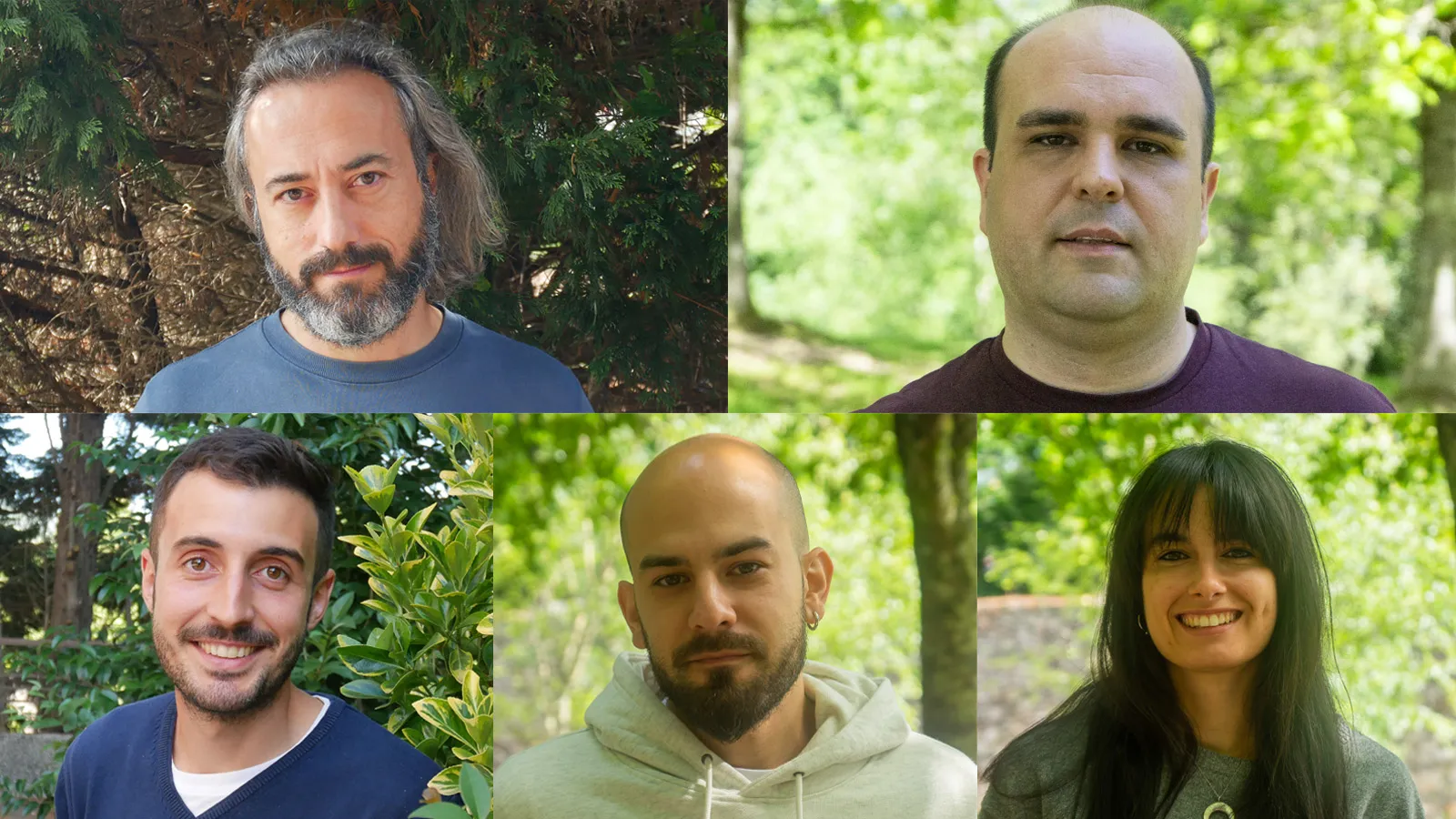IGFAE hosts an international meeting on the development of solenoidal spectrometers



06.05.2025

Nature, one of the world’s leading science journals, publishes this week an article describing a new asymmetric nuclear fission island in a hundred exotic (non-stable) systems. Several members of the Instituto Galego de Física de Altas Enerxías (IGFAE), a joint research centre of the USC and the Xunta de Galicia, participate in the work. The experiment was conducted at the GSI-FAIR accelerator in Darmstadt (Germany), where IGFAE staff have been working for more than two decades.
‘In fission, heavy atomic nuclei break into two parts, generating two new, lighter nuclei and emitting a large amount of energy. Although we have been observing these processes for more than 100 years, the mechanisms governing fission are very complex, partly reflecting the microscopic structure of the nuclei,’ explains Héctor Álvarez-Pol, IGFAE researcher, professor at the USC and one of the authors of the article.
On this point, ‘characterising the fission is a key point to understanding the properties of the atomic nucleus, but also to understanding processes of astrophysical interest that describe the abundance of elements in the universe,’ Álvarez-Pol adds. Among other applications, understanding this process can help to improve energy production, which affects, for example, safety in nuclear power plants.
Asymmetric fission island
The fragments generated in fission (i.e. the new nuclei produced when a heavy nucleus breaks apart) can have similar charges (symmetric fission) or different ones, when one fragment carries a larger part of the nucleus that breaks apart (asymmetric fission). If we plot the results of fission on a nuclide map (an ‘extended periodic table’, representing all the isotopes of the elements) we find large regions where fission is symmetric, with islands or zones where fission is asymmetric. Now, this work allows us to delineate part of an island of asymmetry in a region below lead, which has not previously been explored in detail.
In recent years, following the observation of unexpected asymmetric fissions in exotic neutron-deficient nuclei, new theoretical and experimental investigations have been developed to investigate them further. In this framework, the experiment, carried out within the GSI-FAIR R3B-SOFIA collaboration, aimed to determine the charge distribution of fission fragments for a large collection of exotic nuclei produced and studied at this accelerator.
The results provide the first complete mapping of this new asymmetric fission island of nuclei with lower atomic number than lead. Charge distribution measurements of the fission fragments, dominating structural aspects of the breaking nucleus, are collected and are the product of 100 exotic fission systems, of which 75 are measured for the first time.

Particle identification diagram of the radioactive beams produced in the experiment. Source: Nature
One of the most remarkable findings is the role of the so-called Z=36 deformed proton shell in the lightest fission fragment. This nuclear structure helps to explain the higher probability of generation of certain products in the core break-up, pointing to the influence of structural properties on fission dynamics.
Beyond this, the work contributes to determine the characteristics of fission fragments and predict the evolution between asymmetric actinide break-up, symmetric break-up governing the fragmentation process for lighter nuclei and new asymmetric break-up modes for exotic proton-rich light nuclei. These results will be complemented by new reaction mechanisms to induce fission, such as single nucleon start-up reactions, which have been investigated at the IGFAE and have already given rise to two PhD theses. From the kinematics of the emitted nucleons, these reactions make it possible to reconstruct the excitation energy of the system involved in fission and to study, for example, the evolution of the proton and neutron layers as a function of energy.
For future research, this data set will be essential to constrain reliable and predictive fission models used to estimate the fission properties of nuclei with extreme neutron-proton ratios, where no experimental data are available.
In addition to Héctor Álvarez Pol, the article includes the participation of staff who developed this experiment as part of the IGFAE: José Luis Rodríguez Sánchez (currently at the CITENI research centre of the Universidade da Coruña), Antía Graña González (currently at the Commissariat à Energie Atomique CEA, Paris), Gabriel García Jiménez (currently at the University of Berkeley, USA), and Manuel Feijoo Rodríguez (currently teacher at the IES do Castro, Vigo).
Link to the article: An asymmetric fission island driven by shell effects in light fragments. Nature (2025).